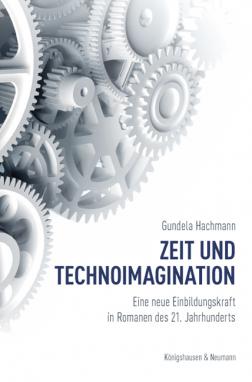Zeit und Technoimagination. Eine neue Einbildungskraft in Romanen des 21. Jahrhunderts

As post-modernism has come to its conclusion, many critics and artists are looking to redefine models and concepts for the 21st century. One of these concepts that people seek to clarify and define is the nature of time. Theorists have repeatedly observed over the last two decades that our modern Western understanding of how we experience time is undergoing a substantial transformation. Processes of communication are becoming faster and faster, means for storing information and preserving parts of the past grow ever more complex, virtual networks increasingly link many levels of reality, and the future is more and more seen as looming catastrophes that are awaiting their realization. Such complexities pose a major challenge to the literary imagination, which is trying to come to terms with the effects of such transformative developments on personal lives and on a subjective sense of identity.
In my book, I discuss four German novels which take on this challenge and pose fundamental questions about the relation of time and identity in the 21st century: Austerlitz by Winfried G. Sebald (2001), UC by Helmut Krausser (2003), 42 by Thomas Lehr (2005), and Spiele by Ulrike Draesner (2005). Remarkably, all these novels closely tie their discussion of temporality to a discussion about the function of images in our contemporary culture. What Gilles Deleuze famously called a “time image” thus becomes the focus of my analysis. Each chapter revolves around a prominent time image that stands at the center of each novel. Sebald's Austerlitz speaks of a “higher stereometry”, Krausser's novel constructs a multi-dimensional temporal hyperspace, Lehr presents us with the paradox of time without flow, and Draesner uses the spiral to explain the interconnections of past, present, and future.
In order to outline the connections between time, image, and identity, I employ a transmedial approach, informed by the theory of the Czech-Brasilian philosopher Vilém Flusser whose late work has been devoted to what he calls “techno-imagination.” Flusser argues that the current prominence and the wide-spread use of image technology cause a fundamental paradigm shift that deeply affects not only the way we communicate, but also the way we think about ourselves and the reality we live in. In order to come to terms with the new image culture, Flusser believes a new cultural and communicative competence, the techno-imagination, is going to be absolutely essential. In following Flusser's basic premise and adapting key concepts of his theory for the analysis of literary texts, I show that the selected novels contribute to the development of a techno-imagination. I understand the novels' constructions of highly idiosyncratic time images as a way to express and exercise subjective freedom in the face of an overwhelmingly influential image culture. In creating complex images of how temporality can be imagined, these novels stretch and expand the literary imagination and, in doing so, inform our understanding of what a techno-imagination needs to aspire to. Ultimately, I am also making the more general point that Flusser's image anthropology is closely intertwined with and related to a literary anthropology based on the philosophy of the imaginary.